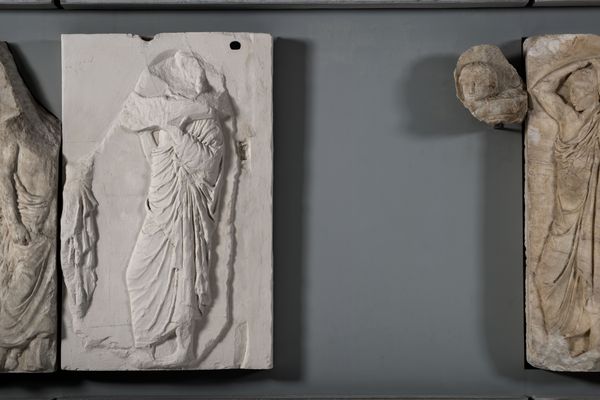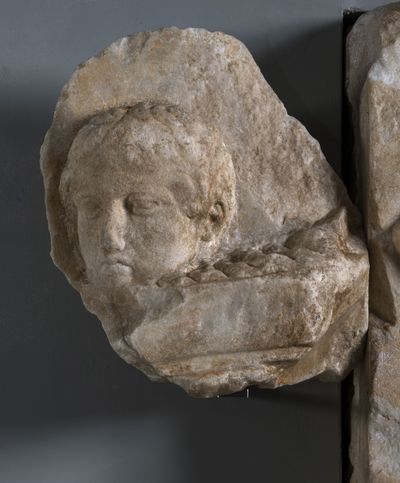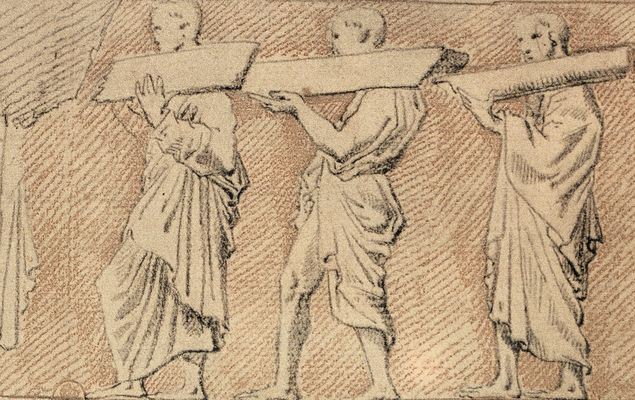Parthenon. North frieze. Block 5 (V). Fragment
Inventory number
MV 1014
Artist
Pheidias' workshop
Category
Architectural sculpture
Period
Classical Period
Date
445-440 BC
Dimensions
0.25 x 0.215 x 0.152 m
Material
Marble from Penteli
Location
Parthenon Gallery








